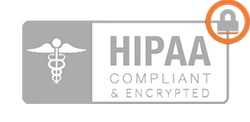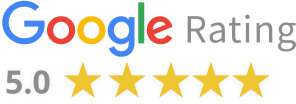
For employers aiming to strike a balance between cost control and competitive employee benefits, navigating today’s health insurance landscape requires more than just picking a plan – it demands strategy. Level funded and self funded health insurance models have emerged as smart alternatives to traditional fully insured plans, offering flexibility, financial transparency and potential long-term savings.
But while both approaches aim to optimize healthcare spending, understanding their structural and risk-related differences is essential before deciding which path fits your organization best.
Here, we’ll explore the differences between a level funded plan and a self funded plan, break down their pros and cons and help you determine which may be better suited for your business.
What Is Level Funded Insurance?
Before diving into the specifics, it’s helpful to first understand the structure of each model.
A level funded health plan is a hybrid model that blends the consistency of a fully insured plan with the cost-saving potential of self funding. Designed to offer both predictability and financial upside, it’s become a popular choice for small to mid-sized businesses seeking to manage healthcare costs without taking on full liability for claims.
Employers pay a fixed monthly amount, which is allocated across three buckets: administrative services, stop-loss insurance (to cover large, unexpected claims) and a claims fund used to pay for employee healthcare expenses. This structure provides budgeting clarity, which is especially valuable for businesses with limited reserves or low risk tolerance.
If the total claims paid out over the year fall below the amount funded, the employer may receive a refund or credit – creating an opportunity for savings. At the same time, stop-loss coverage limits financial exposure from catastrophic events. Compared to a traditional fully insured plan, level funded models offer increased transparency, greater plan customization and a potential for cost reduction, all while maintaining a manageable level of risk.
What Is Self Funded Insurance?
A self funded health insurance plan gives employers complete control – and full financial responsibility – for their employees’ medical claims. Rather than paying a set premium to a carrier, the employer pays out claims as they are incurred, typically with the support of a third-party administrator (TPA) who handles claims processing, compliance and provider coordination.
The benefits of this model are significant. Businesses can customize nearly every aspect of their group health insurance – from provider networks to plan design – tailoring it to their workforce’s unique needs. Employers gain access to detailed claims data, improving their ability to forecast costs, adjust strategies and implement wellness programs that drive long-term savings.
By eliminating the insurer’s profit margin and many administrative costs, self funded health insurance can offer substantial financial benefits, particularly for companies with healthy, low-utilization populations.
However, these advantages come with higher financial risk. A single high-cost medical event can dramatically impact the budget. That’s why most self funded employers purchase stop-loss insurance, which caps the amount they pay for both individual and aggregate claims.
Self funded plans are generally recommended for larger businesses or those with sufficient reserves and a solid understanding of healthcare spending trends. For these organizations, the added responsibility is often worth the ability to directly control healthcare strategy and reduce long-term costs.
Key Differences Between Level Funded and Self Funded Insurance
While both level funded and self funded insurance models give employers more control compared to traditional fully insured plans, they operate with different structures, financial dynamics and risk-sharing philosophies. Understanding these distinctions is critical for any organization weighing their healthcare benefits strategy.
At their core, the two models diverge in how costs are handled, how much risk the employer assumes and how predictable those costs are over time. A level funded plan provides fixed monthly costs, making it easier to budget and forecast. This can be especially appealing to smaller businesses or those with limited cash flow, where consistency is a priority.
In contrast, self funded plans operate on a pay-as-you-go basis – claims are paid as they occur – creating greater variability in monthly spend, but also allowing for a more direct connection between plan performance and total cost.
One of the most significant differences lies in risk exposure. With a level funded model, stop-loss insurance is baked into the structure and shields the employer from large, unexpected claims. The employer’s liability is effectively capped and surplus claims funds may be refunded if expenses are lower than projected.
Self funded plans, while they also often include stop-loss policies, leave much more financial exposure in the hands of the employer. The reward for that risk is potential long-term cost savings and the freedom to allocate resources more strategically.
Flexibility is another defining characteristic. A self funded plan allows full customization of benefit design – from plan structure and provider networks to prescription formularies and wellness initiatives. Businesses can react more quickly to workforce needs or emerging healthcare trends, adjusting the plan as needed without waiting for annual insurer updates. A level funded plan offers some flexibility, but is typically more structured by the provider, with fewer opportunities to tailor benefits on the fly.
For businesses focused on growth or innovation, this distinction matters. A self funded arrangement gives growing companies the agility to design scalable benefits programs aligned with workforce demographics and performance goals. It also provides more granular access to claims data, which supports proactive population health management. Level funded plans may also offer reporting tools, but with less depth or timeliness.
Financial stability is also impacted by the funding model a business selects. Level funding provides predictability, which supports consistent cash flow management. This is beneficial not just for budgeting but for meeting broader financial planning objectives, such as preparing for expansion or an economic downturn.
Self funding, however, introduces greater variability, meaning that employers need to set aside reserves or access flexible financing to handle surges in claims. This unpredictability can be manageable for larger organizations or those with a strong financial backbone, but it could create pressure for companies with tighter margins.
When thinking about the implications for an overall employee benefits program, level funding typically limits innovation but delivers a smoother administrative experience. It removes much of the complexity associated with compliance, vendor management and claims adjudication.
For lean HR teams, this simplified model reduces the operational load. Self funded plans, by comparison, require a deeper infrastructure and often a partnership with a TPA to handle compliance, processing and member support.
Ultimately, the decision between a level funded vs. self funded approach should be grounded in a clear-eyed evaluation of risk tolerance, company size, growth trajectory and internal resources. A level funded health plan might be best for a business seeking cost containment without overextending financial risk.
Meanwhile, a self funded health insurance model may be the right fit for employers looking to drive innovation, fine-tune employee offerings and take a more hands-on approach to managing healthcare costs.
Each path has its benefits – and its trade-offs. It’s not simply about saving money this year. It’s about crafting a benefits strategy that aligns with your business’s values, goals and operational capacity for years to come.
Cost Implications and Long-Term Benefits
Level Funded Plan: Predictable Costs with Potential Refunds
The primary financial advantage of a level funded model is predictability. You know what your payment is each month, and you can budget accordingly. If claims come in lower than anticipated, your business may receive a refund of the unused claim fund.
This arrangement appeals to businesses that need the stability of a fixed budget but want to avoid overpaying premiums year after year. Level funding offers a sweet spot between flexibility and peace of mind.
Self Funded Plan: Customization and Cost Efficiency
With a self funded plan, employers gain control over the structure and cost of their group health insurance. There are no insurance carrier markups or profit margins to contend with. You only pay for what your employees use.
When claims are low, savings can be significant. And with tools like data analytics, wellness programs and tailored benefit design, employers can better manage risk and healthcare utilization over time.
But it’s important to plan carefully. High-cost claims can disrupt your budget, which is why financial modeling and stop-loss protection are essential for any business exploring self funding.
Understanding the Risks of Self Funded Insurance
While self funded plans come with plenty of upside, they also carry a higher degree of financial risk. Here are some of the most common concerns:
- Unpredictable Claims: A single catastrophic illness or injury could result in tens – or hundreds – of thousands in claims.
- Cash Flow Pressure: Because claims are paid as they are incurred, a business must have the liquidity to meet those obligations.
- Compliance Complexity: Self funded employers must manage the requirements of ERISA, HIPAA, COBRA and other regulatory frameworks directly.
Risk Management Solutions
Businesses can protect themselves by layering in stop-loss insurance, which places a cap on the amount they are liable for, both per-employee and in aggregate. Additionally, actuarial forecasting tools and historical claims data allow businesses to estimate likely expenses and build sufficient reserves.
Risk can never be eliminated – but it can be managed thoughtfully with the right partners and tools.
Choosing the Right Model for Your Business
Deciding between a level funded and self funded health plan requires an honest assessment of your business’s size, financial condition and tolerance for volatility.
Key Questions to Ask
- What is our historical claims data?
- Do we have the cash reserves to fund unpredictable expenses?
- Are we willing and able to take on the administrative responsibilities of a self funded model?
- Is predictability more valuable to us than the possibility of greater cost savings?
When to Consider Level Funded:
- You’re a small to mid-size business with limited reserves.
- You want to explore alternatives to a fully insured plan.
- You value predictable monthly premiums.
- You’re looking to participate in potential refund savings.
When to Consider Self Funded:
- You’re a larger employer with stable financial resources.
- You want to tailor benefits to your workforce.
- You’re comfortable managing claims and compliance with a TPA.
- You’re prepared for financial risk but want the opportunity for larger cost savings.
Working with a knowledgeable advisor can help you assess the pros and cons for your specific situation. If you’re unsure where to start, Selected Benefits offers expert guidance to help businesses navigate this complex decision.
The Final Word: Making Informed Insurance Decisions
Choosing between a level funded and self funded plan isn’t just a tactical HR decision – it’s a strategic financial choice.
- A level funded health plan provides budgeting consistency and simplified administration, making it ideal for smaller employers who still want cost control and transparency.
- A self funded plan offers deeper customization, potentially lower long-term costs and full visibility into spending – but it requires a strong risk tolerance and administrative bandwidth.
Both models offer advantages over the traditional fully insured plan, especially when employers are trying to gain more control over skyrocketing healthcare costs. By assessing your workforce needs, financial posture and risk appetite, your company can make a confident, informed decision.
At Selected Benefits, we help employers weigh the options with clarity and insight. From cost modeling to compliance to carrier negotiations, we provide a full-service consultation that’s personalized for your business goals. Whether you’re considering a transition or simply exploring what’s next, we’re here to help.
Ready to explore your options? Request more information today and take the first step toward smarter benefits management.


